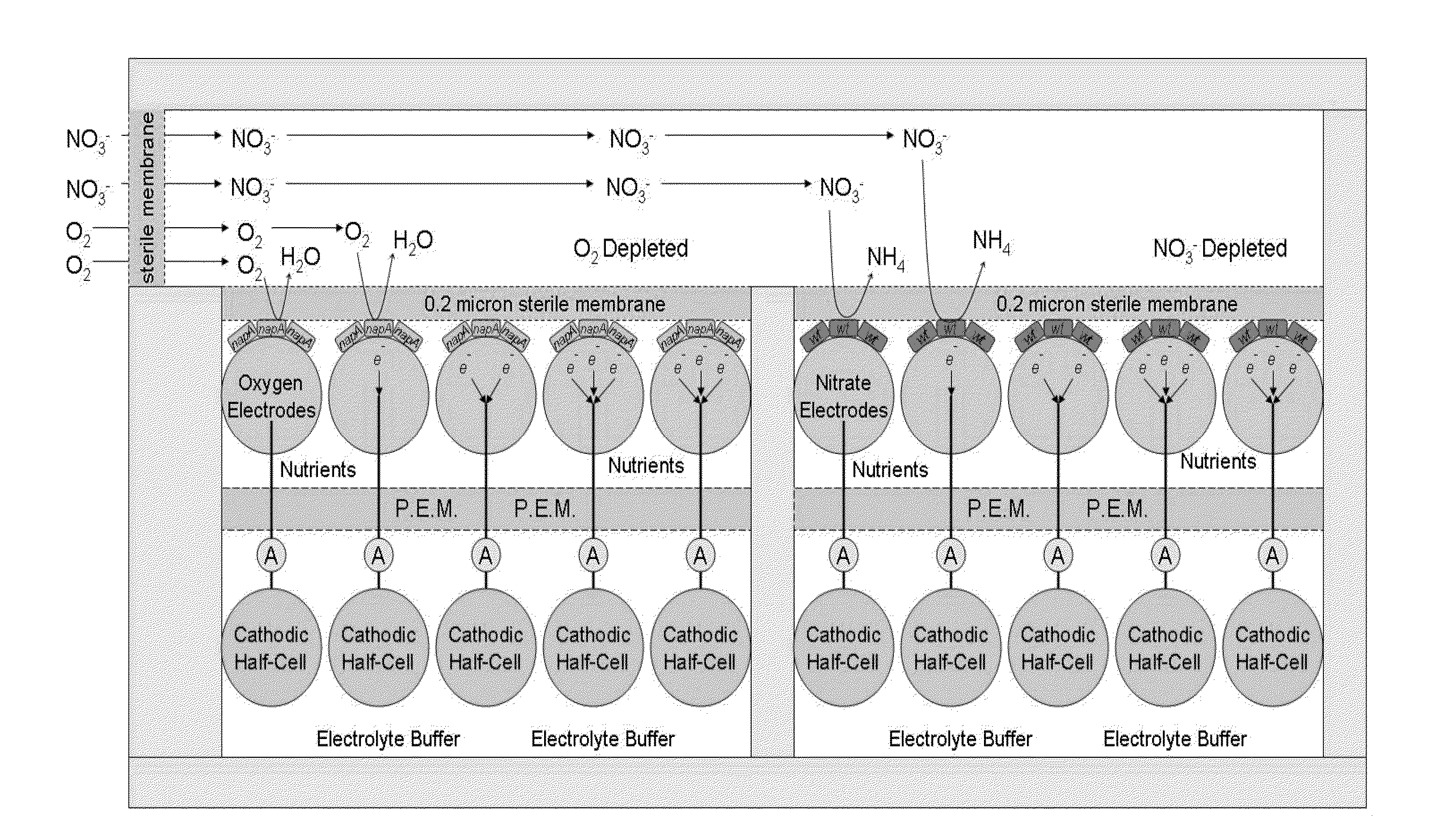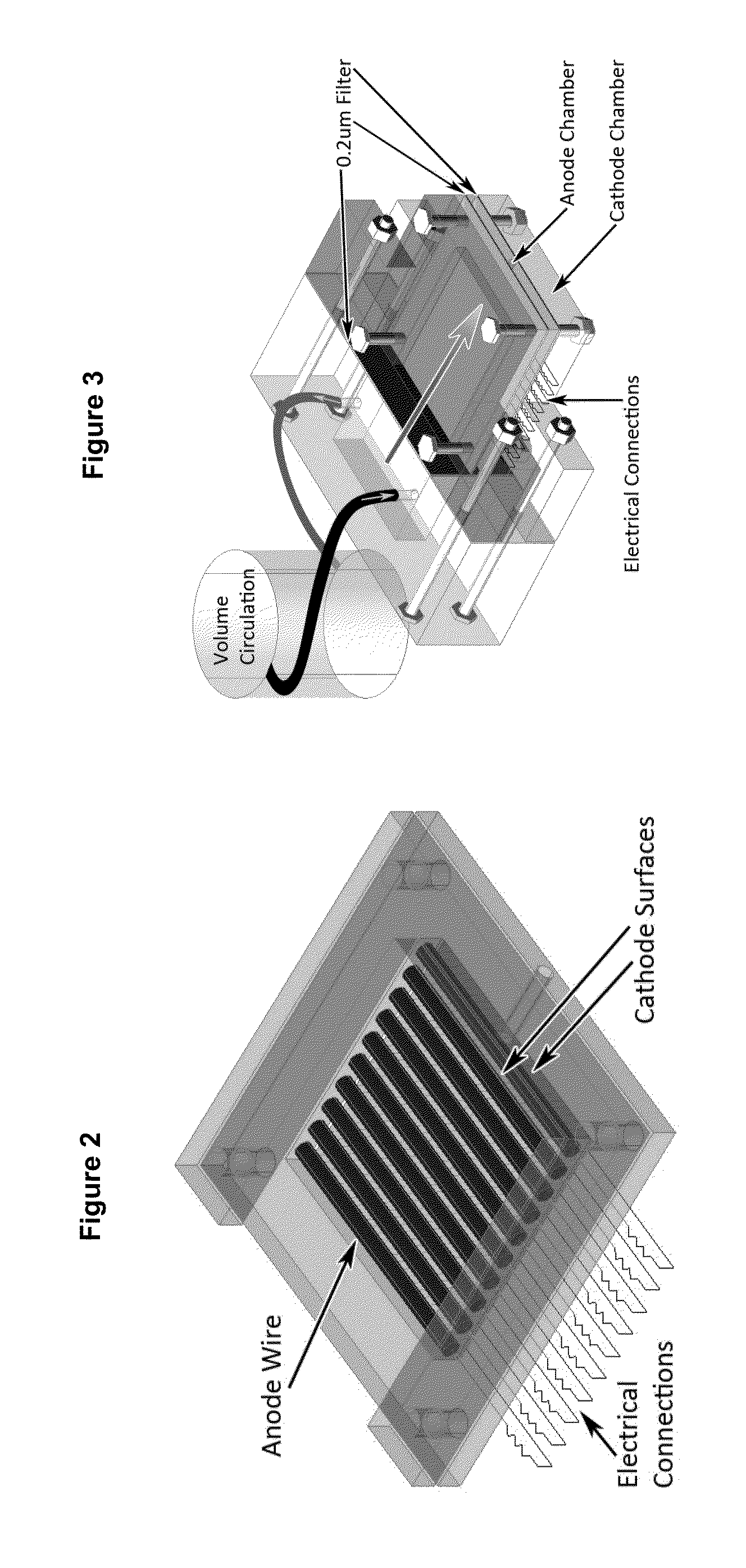Microbially-based sensors for environmental monitoring
a microorganism and environmental monitoring technology, applied in the field of environmental monitoring, can solve the problems of significant environmental and human health challenges, high nitrate loss from agricultural land managed by subsurface or tile drainage systems, and pollution from agricultural production and other sources, and achieve the effects of low cost, accurate and durabl
- Summary
- Abstract
- Description
- Claims
- Application Information
AI Technical Summary
Benefits of technology
Problems solved by technology
Method used
Image
Examples
example 1
Development of a Microbially-Based Nitrate Sensor
[0073]The present example demonstrates the feasibility of using the preferential electron acceptor utilization of Shewanella oneidensis as the basis for a microbial sensor. Specifically, the present example aims to:[0074]1) Demonstrate differential current down a concentration gradient of oxygen established by diffusion and respiratory consumption[0075]2) Demonstrate differential current down a concentration gradient of nitrate established by diffusion and respiratory consumption.[0076]3) Establish preliminary sensor design based on the parameters of sensor dimensions, consumption rate of electron acceptor, and diffusivity of the electron acceptor species.
The sensor is developed in four parallel steps according to the method outlined below.
Step 1: Construct the Test Cells
[0077]The test cells for Phase I is composed of two components, the sensor region and the media recirculation system (FIG. 2). The general design of these components ...
PUM
| Property | Measurement | Unit |
|---|---|---|
| Volume | aaaaa | aaaaa |
| Current | aaaaa | aaaaa |
| Permeability | aaaaa | aaaaa |
Abstract
Description
Claims
Application Information
 Login to View More
Login to View More - R&D
- Intellectual Property
- Life Sciences
- Materials
- Tech Scout
- Unparalleled Data Quality
- Higher Quality Content
- 60% Fewer Hallucinations
Browse by: Latest US Patents, China's latest patents, Technical Efficacy Thesaurus, Application Domain, Technology Topic, Popular Technical Reports.
© 2025 PatSnap. All rights reserved.Legal|Privacy policy|Modern Slavery Act Transparency Statement|Sitemap|About US| Contact US: help@patsnap.com



